Huernias are fascinating plants with exotic-looking flowers. Huernias are somewhat rare, but many sellers on sites such as Etsy carry them. I have been searching for a Huernia for about a year now and finally found one at a local nursery the other day! They only had two specimens available, so I was ecstatic that I was able to grab one before they were gone! If you manage to get your hands one of these plants too, you will want to know how to take care of it.
The following table outlines how to care for Huernias, specifically Huernia zebrina which is one of the most commonly grown Huernia. However, this table applies to all species of Huernia.
| Scientific Name | Huernia zebrina |
| Common Name | Lifesaver Cactus, Lifesaver Plant, Little Owl Eyes, Carrion Flower |
| Lighting Requirements | Full sunlight (partial shade if you live in a location that receives a lot of hot, intense sunlight for extended periods) When grown indoors, place next to an east-facing window |
| Watering Requirements | Water thoroughly and allow the soil to dry out completely between watering sessions. During the winter, let the soil remain dry for 2-3 days before watering again. |
| Temperature | Huernias grow best in temperatures between 50°F and 80°F. These plants can be grown outdoors in USDA Hardiness Zones 9-11 |
| Humidity | 30% to 60% |
| Soil | Well-draining soil. A good soil mix would be comprised of 2 parts coarse sand, 1 part perlite, and 1 part high-quality potting soil |
| Repotting | Replace the soil every 2-3 years. Does not need to be planted in a larger container when repotted. |
| Fertilization | Apply a balanced fertilizer (e.g., 10-10-10, 15-15-15) once per month during the active growing season. |
| Propagation | Stem cuttings or seed |
| Toxicity | Milky, latex sap is toxic if ingested and can cause irritation if it comes into contact with your eyes |
The rest of this article will serve as a detailed care guide for Huernia succulents. Happy growing!
About Huernias
Huernia is a genus of succulent plants that are native to Eastern Africa, Southern Africa, and Arabia. The genus was first described in 1810 and is named for Justus Huernius (1587-1652) who was a Dutch pioneer missionary in the East Indies. Justus Huernius was one of the first collectors of South African plants. Huernias are not cacti even though their tubercles give them a similar appearance to cacti.
tubercles – any round nodule or warty outgrowth found on the surface of a plant.
Huernias are typically grown for their beautiful flowers. The flowers are five-lobed, and the center of the flowers tends to have a lifesaver shape (hence the nickname Lifesaver Cactus). Although beautiful, the flowers produced by Huernias emit an offensive odor that is often compared to is carrion (decaying flesh of animals). Fortunately, you have to get really close to the flowers to smell the carrion odor.
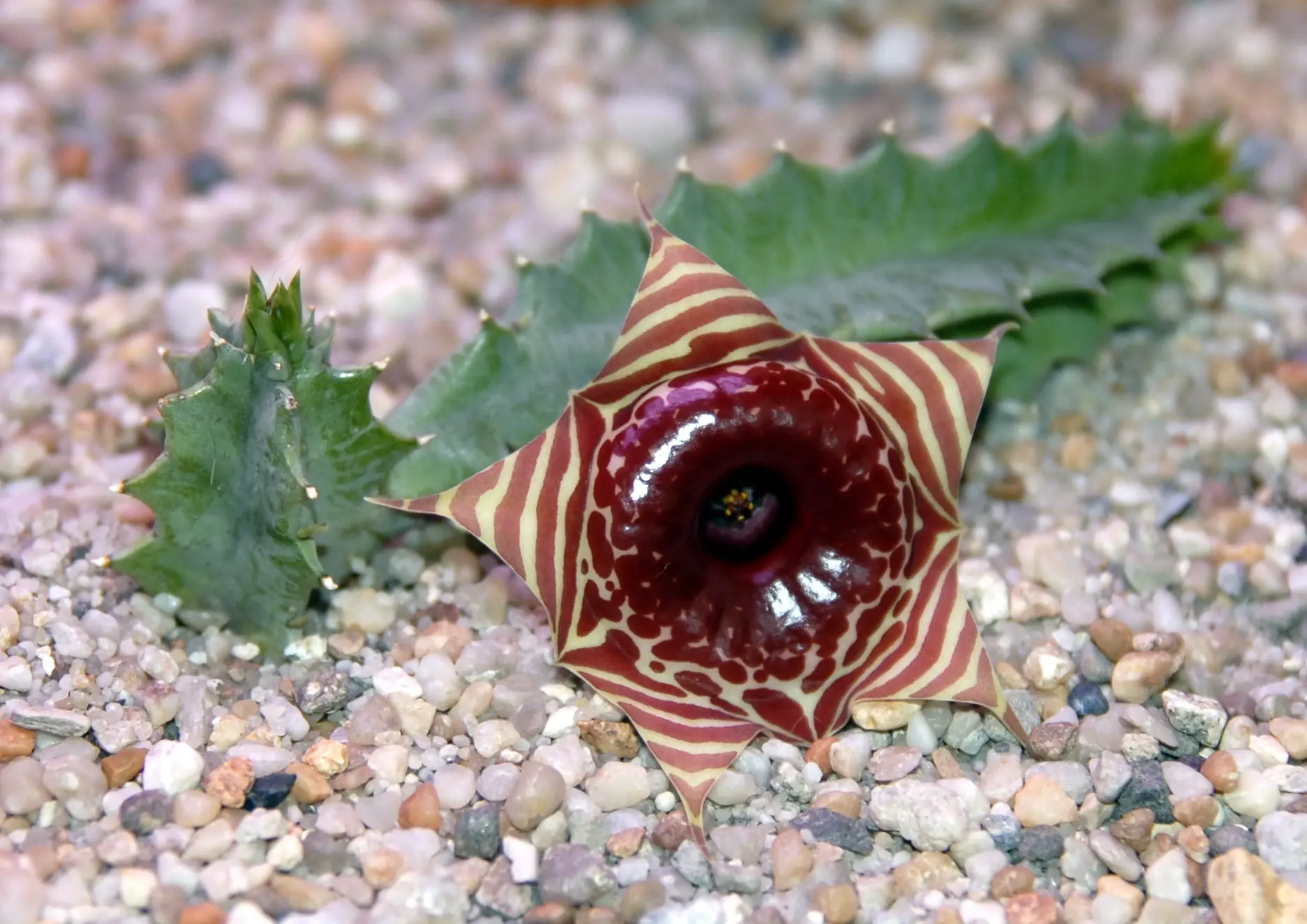
Huernia zebrina ‘kwiat’ 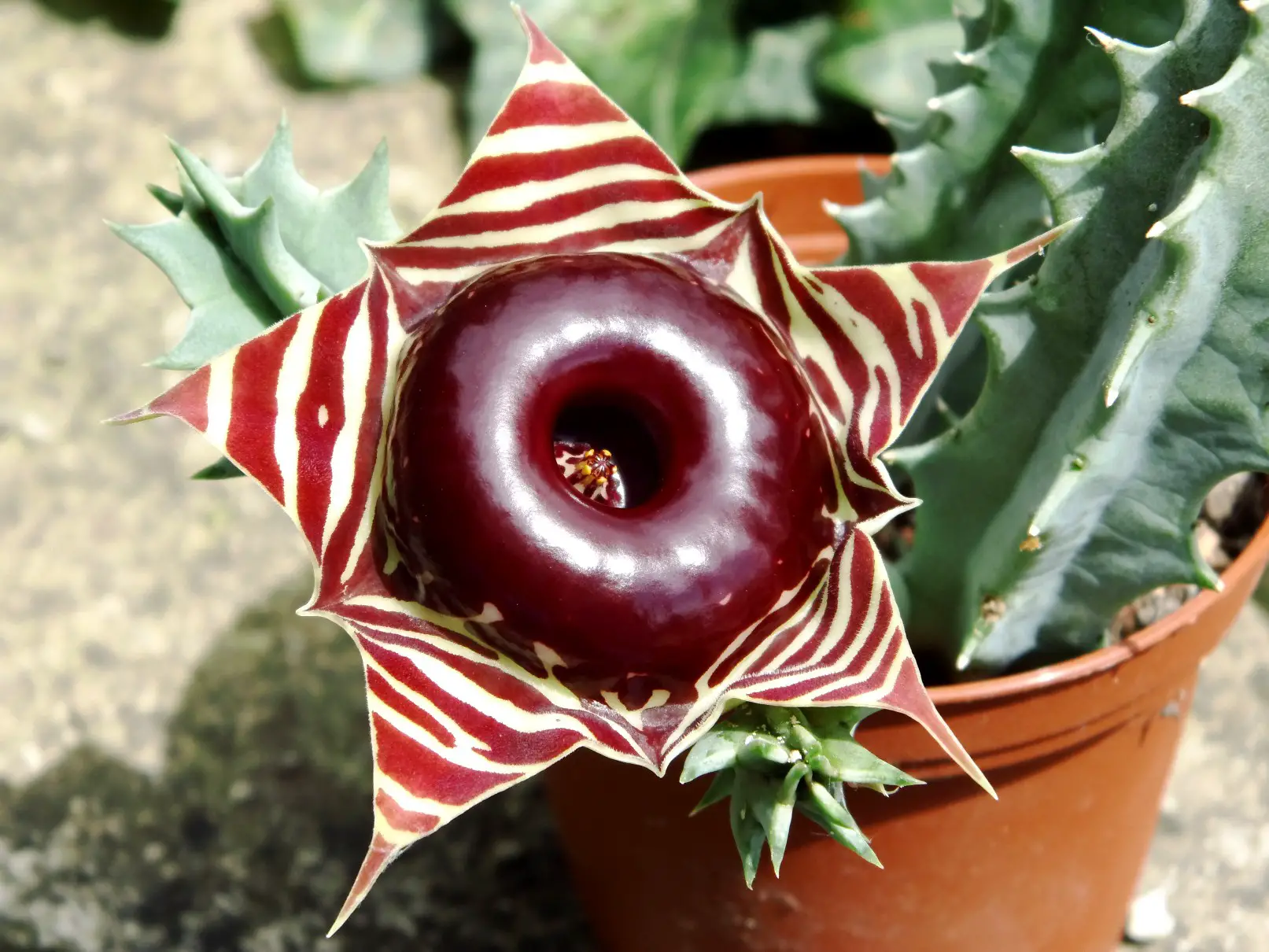
Huernia zebrina 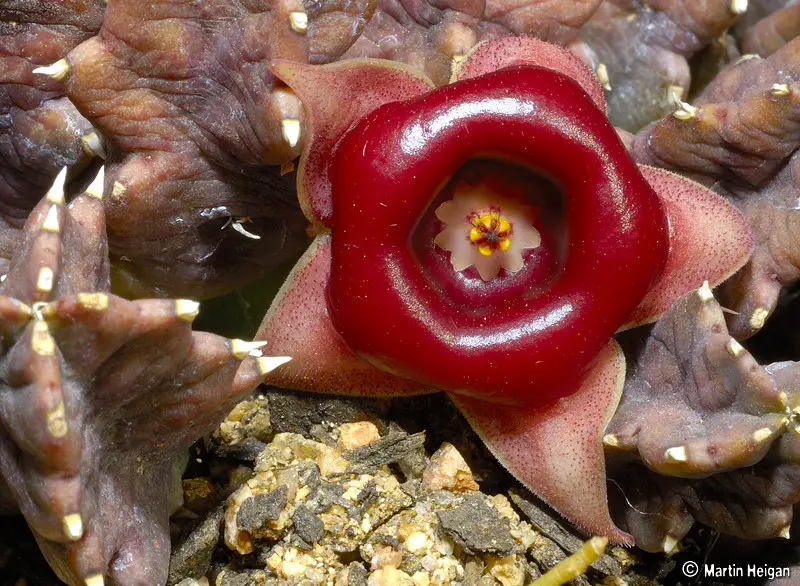
Huernia insigniflora 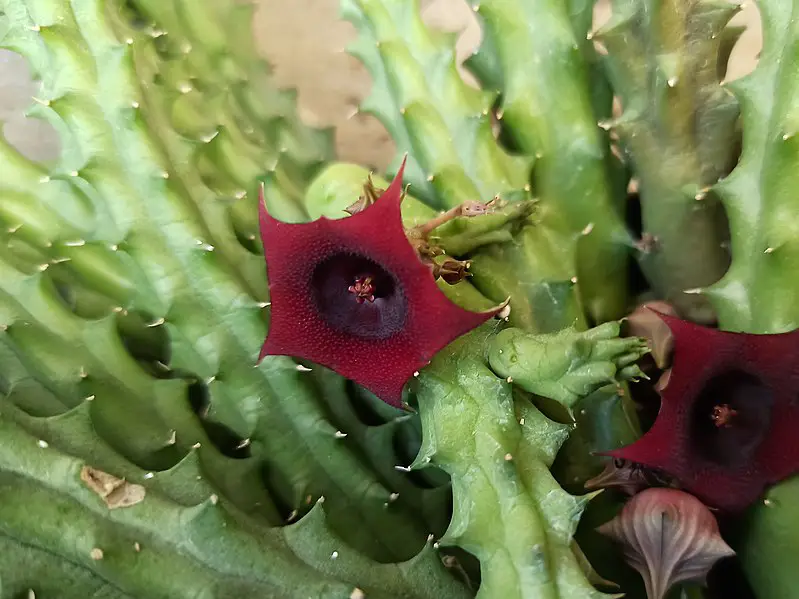
Huernia schneideriana 
Huernia barbata 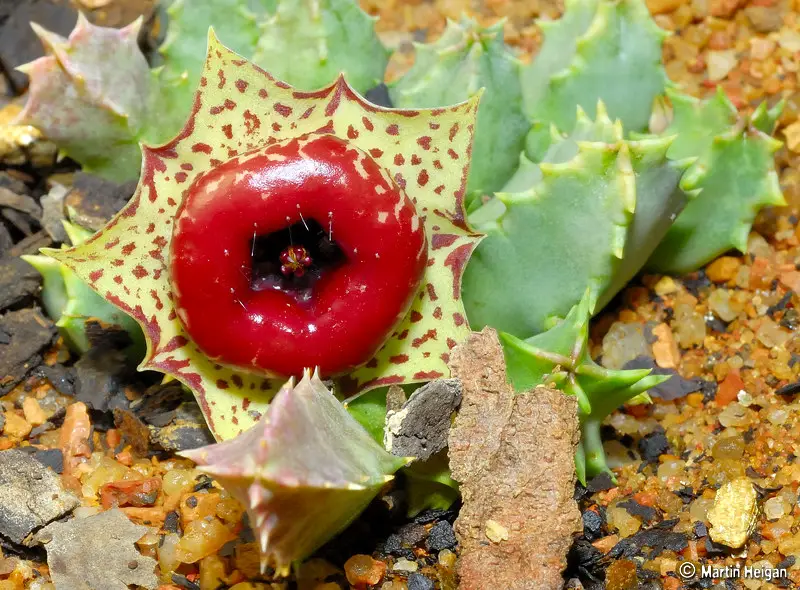
Huernia plowesii
Interestingly, several species of Huernias are known for being famine food in southern Ethiopia. In addition, Huerina hystrix is a succulent used in traditional medicine systems on South Africa’s eastern seaboard (Amoo et al., 2012). A study conducted by researchers at the University of KwaZulu‐Natal Pietermaritzbur in South Africa found that the roots of Huernia hystrix have strong antioxidant activity (Amoo et al., 2012).
Lighting Requirements For Huernias
Like many other succulents, Huernias need exposure to plenty of light. These plants will thrive in full sun. However, if you live in a location that receives a lot of hot, direct sunlight for extended periods of time (e.g., Arizona, Palm Springs, New Mexico, Las Vegas), it is best to put this plant in partial shade. As is the case with many succulents, the stems will turn a red color if the plant becomes moderately stressed due to excess light.
Exposure to too little light will stunt plant growth and can result in decreased flower production.
When growing Huernias indoors, it is best to put these plants next to an east-facing or west-facing window. They will also do well when kept a few feet from a south-facing window.
Watering Requirements For Huernias
Huernias have watering requirements that are similar to many other types of succulents. To water your Huernia properly, water your plant thoroughly and allow the soil to dry out completely between watering sessions. During the active growing season, make sure the soil does not remain dry longer than a day or two. Huernias that are exposed to direct sunlight need to be watered more frequently than Huernias grown indoors. Similarly, Huernias growing in soil that drains more easily need to be watered more frequently than those grown in soil that retains more water.
During the dormant (winter) season, allow the soil to remain dry for 2-3 days before watering again. In cooler temperatures, it is very important to allow the plant to stay dry.
Temperature and Humidity Levels Suitable For Huernias
Huernias grow best in temperatures between 50°F and 80°F. The temperature in their native habitat ranges from 55°F and 90°F. Huernias can tolerate temperatures as low as 40°F if they are kept dry. However, Huernias are not frost hardy and should be brought indoors before the first frost. Huernias can also tolerate temperatures as high as 100°F if they are protected from direct sunlight and are given adequate water.
Huernias can be successfully grown outdoors in United States Department of Agriculture (USDA) Hardiness Zones 9 through 11. In cooler climates, it is best to grow Huernias indoors.
In their native habitat, Huernias experience a range of humidity levels. During the dry season, the humidity will be rather low. However, during the wet season, these plants will experience higher humidity. Humidity levels typical of most indoor environments are fine for Huernias. You do not need to purchase a humidifier to keep these plants happy.
Best Soil For Huernias
Like many types of succulents, Huernias prefer to grow in well-draining soil. An ideal soil mix for Huernias is comprised of 2 parts coarse sand, 1 part perlite, and 1 part high-quality potting soil. A little bit of compost (a hand full) will provide nutrients that will promote plant growth and help the plant maintain a healthy appearance.
Repotting Huernias
Huernias typically do not outgrow their containers. Allowing the plants to tightly fit in its container keeps the growth compact and prevents standing water from pooling in excess soil. You should replace your plants’ soil every two or three years, but you do not necessarily need to put your Huernias in a larger container when repotting.
Fertilizing Huernias
Huernias will benefit from some fertilization during the active growing season. During the active growing season (spring and summer), fertilize your Huernia once per month with a balanced fertilizer (e.g., 10-10-10 or 15-15-15) diluted to half strength. Apply fertilizer during one of your plant’s regular watering sessions.
Avoid fertilizing your Huernia during the winter months. The plant is “resting’ during the winter and does not need the extra nutrients.
Propagating Huernias
The best time to propagate Huernias is during the springtime. To propagate a Huernia, cut a healthy stem near the base of the plant. Then allow the cutting to dry out. This usually takes a day or two. Finally, dip the end of the cutting in rooting hormone (optional) and stick the cutting in well-draining soil. Water sparingly until the plant roots.
NOTE: To learn more about using rooting hormone, check out this article I wrote.
Alternatively, you can grow Huernias from seed. Clip off a flower and wait for the flowers to dry out. Then collect the seeds from the flower. Finally, sow the seeds in peat moss during early spring. Mist the soil and cover your growing tray with a thin layer of plastic. The following video shows how to grow Huernias from seed:
Are Huernias Toxic?
This plant is part of the Milkweed Family (Apocynaceae). Like other plants belonging to the Milkweed Family, Huernias contain a latex sap that is toxic if ingested. The white, milky latex sap can also cause eye irritation. Due to its toxic nature, Huernias should be placed in a location that is out of reach of pets and children.

